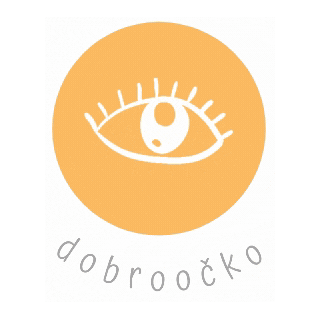Good practice advice for youth organizations
Legal Aspects
Organization Structure
Legal Aspects
Economics of a Youth Organization
The most common problems and challenges currently addressed by youth organizations in the field of economy, accounting and taxation:
- The division of main and complementary activities, namely the definition of activities.
- Absence of trade licenses.
- Handing over the agenda of the organization upon change of statutory bodies (handing over of documents, concluded treaties, cash registers, etc.).
- Issuance of cash documents immediately after issue or receipt of cash and at the same time managing records in a cash register.
- Confusion between donation and advertising contracts.
- Scholarships are for students, not for organizations.
- Clubs which have reversal revenues from additional payroll activity, received in cash, by card or by check on a ponder, are subject to the EET if the turnover exceeds 300 thousand. (In the middle of 2017 this was a turnover of more than CZK 175 thousand) or 5% of total revenues.
- Travel expenses paid to persons who are not a statutory body and are not an employee or working under agreement to perform a work.
Ten Commandments on How to handle the money and property of the organization
- Inventorize your property and obtain physically lockable cash register!
- Update the articles of the organization by law!
- Take consultations on how to register documents, trade license, payment of VAT and the need to keep double-entry bookkeeping with the licensed accountant!
- Create your account!
- Submit your tax declaration in time!
- Define your main and secondary activity!
- Create the responsibility matrix!
- Be transparent!
- Separate the grant subsidies and your own money!
- Manage the organization properly!
Organization Structure
Team roles and competencies in the youth organization
When creating a team, you need to realize the roles within the team:
-
• Plant
• Resource Investigator
• Co-ordinator
• Shaper
• Teamworker
• Implementer
• Monitor Evaluator
• Completer Fihisher
• Specialist
According to them, it is then possible to better define the competencies of individual members. Competences of a member:
- Assumptions or ability to handle a particular function, activity or situation.
- A set of knowledge, abilities, attitudes, and values that make it possible for an individual to be employed.
- Means a sum of the powers and duties of a given authority and its scope.
Competence is gained by a member of the SO with experience. The more experience, the more competencies. This means that competencies may change over time.
Division of responsibilities within the youth organization
The main task is to create a matrix of responsibilities. The responsibility matrix, sometimes even the Responsibility Assignment Matrix (RAM) or Linear Responsibility Chart (LRC), is a method based on assigning different types of responsibilities to individual tasks, activities and roles (by a particular job or body) in the form of a matrix. It is used in projects, processes, or parts thereof. The roles, to which responsibilities are assigned to, are generally in rows and the tasks are usually in rows. There are several variants of matrices that differ from one another to a range of responsibilities, among the most commonly used RACI and RASCI matrices.
Recommended matrix creation procedure:
- Writing groups of activities for which it is necessary to define responsibility in the matrix rows.
- Writing all important roles to matrix columns, can be based on a hierarchical organizational structure.
- Write the types of tasks assigned to the individual cells of the created matrix.
- Make sure that each activity (line) has an associated person who is responsible for the task and that implements it.
- Make sure that, for each task, obligations are clearly drawn and do not overlap.
- Submit the matrix to all the relevant stakeholders and incorporate relevant comments prior to official publication.
Work in an organization
Attracting newbies
Getting new members to organizations:
- Where - registration, events.
- How - personally at the registration, on lectures, in press, on television, on the social media, on the web.
- Which means? - logo, photos, projects, slogan, benefits, contact.
The recruitment:
- CV, motivation letter.
- Interview, personality test, trial project.
- Personal meeting, invitation to the members meeting.
Onboarding:
- Shadowing, mentoring.
- Meetings, giving assignments.
The first steps of a newbie
What's important when working with new members:
- Personal contact with senior members.
- Participation in the organization of events, taking into account previous experience.
- Buddy / Mentor / Angel - A person who will monitor the activity of a newbie.
- Teambuilding for new members - obtaining contacts, getting to know others.
- Feedback - constructive feedback is a motivating tool for further work within the organization.
- Soft-skill trainings.
- Motivation.
How to work with new members
How difficult the experience of a new member may be? What they lack and how they work in the team. There are different types of people and they need to be approached accordingly. To work with newcomers, it's a good idea to create an action plan. It is always necessary to remember that:
- Everyone is different, but that does not mean in a bad way. The goal is to learn how to work with all types of people.
- Every other newcomer is neutral and, if we do not pay enough attention, he/she may soon leave.
- We do not have to deal with all the problems on our own. If we manage the team in a right way, different types of members will cover each other's weaknesses.
Knowledge management
How to hand over all the skills? Everything is about communication:
- Do not guess
- Ask
- Make sure
- Control
Let’s meet regularly:
- Meetings
- Teambuildings
- Workshops
Let’s create clear rules for sharing information. Make clear of what and where do we keep record.
- Centrally shared storage with a clear structure.
- Shared calendars.
Motivation
How to motivate yourself?
- Know the purpose of your activities - Recalling the purpose / meaning of action can help us stay on the right path.
- Receive Challenges - It's natural when we are dealing with a monotonous activity for too long, our motivation is dwindling - so it is recommended to actively look for challenges; with the accomplishment of a challenge comes the feeling of satisfaction and self-development
- Be realistic even in your enthusiasm - if something excites you - be realistic in what you are able to achieve - check your diary and keep it real while planning.
- Visualization of success in achieving the goal can help us go further in the moments of demotivation - we can try to close our eyes for 10-15 minutes a day and to picture how the goal will be achieved - how we feel, what will change, etc.
- If we share our goal with others, we can keep stronger motivation to achieve it - verbalize your vision aloud is giving it clearer contours.
- Think positively - instead of I HAVE TO go to work, OR I HAVE TO, practice exchanging words just for I WANT TO - try one day to see things more positive:)
- Do not be afraid to risk - be creative and think about where you can go, what more can you do - but do not forget about the risk analysis - what do you get by taking the risk - and what can you lose?
- Look for constant feedback - feedback from yourself and from the people around you.
- Get to know your goal and see the meaning in the process of achieving it, in order to know your goal - to have a clear vision, the SMART method will help us.
How to motivate colleagues in a team?
- Clear, direct and regular communication within the team - do not forget the feedback to members.
- Definition of roles within the team and the organization - to show the members that they are an important part, without which the organization cannot function (it is from the simple logic that with no members there would be no organization); visualization of the position held by the member within the whole organization can help.
- Everyone is involved - let's not be afraid of brainstorming in our meetings - we ask for ideas on how to move the organization where it is supposed to go according to the members of the organization; we can achieve greater commitment and motivation within the organization.
- Transparency - In chaos and ambiguity, the potential and motivation of our members may be lost - if we show structure of the organization and how things work within the organization - members can clearly see where the organization is heading, what visions it has and how it works.
- Let us be inspired - each of us has a story in an organization that can become a motivator for the others, don’t be afraid to inspire within your visions, which don not be afraid to show and emphasize.
- Make the activities sensible - let's share why our organization / team is doing what it does.
- Appreciate uniqueness - each member has his/her own potential, unique personality - let them get loose and create new opportunities that can keep them motivated.
- Let our members experience what our organization is about.
How to Use Creativity in an Organization
Who are the creative people?
- People who have significantly influenced our culture, the world around us. Their successes are known to the public, they are in the public eye, and it is relatively easy to link them with creativity concept. Typically, it is an art form.
- People expressing unusual thoughts, looking for new ways of solving problems, produce many ideas. They are interesting and usually act very briskly.
- People who perceive the world in a new and original way. They have a good observation skill and can be matched by important discoveries that only they see.
Creative people can be an advantage in a team where:
- we need to invent a great deal of ideas (a set of ideas to choose from)
- in situations where common solutions usually fail and we need to come up with something new
- brainstorming is not a strength of that particular team
- It takes a lot of energy to commence the work
- You may need to improvise
Conversely, creative people may also suffer or fail to deliver results when:
- the work is stereotypical
- the job requires more time devoted to one task, to one idea
- things need to be finished
- they have no option to choose what they want to do
- they have fixed deadlines
Stress, work with it and its reduction
Basic division of stress
- Eustres - Emotional accompaniment is positive, supports growth, development; brings joy, but some degree of effort is necessary
- Distres - the situation of the subjectively experienced threat of the person with his accompanying, often severely negative emotional symptoms
Factors affecting workload:
- Overload of work (this is a situation where the amount of work is higher than a particular individual able to do at a certain time)
- Time stress (lack of time to do a job)
- Disproportionately large responsibility (especially responsibility for human lives is a stressor factor)
- The lack of clarification of the competences (the work task is unclear, the worker does not have adequate feedback)
What shall we do about it:
- Learn how to spend time
- Learning to delegate some of the duties and powers to subordinates
- Learn to reject tasks that I cannot really do
- Try to decompose big problems into smaller ones and then solve them step by step
- Know yourself and learn how to cope with your emotions, learn to keep calm even in stressful situations
Public relations
How to Promote a Youth Organization
The foundation of successful promotion is the creation of the Communication Strategy:
- Target - what we want to achieve
- Target Audience - A predetermined group to whom I want to communicate my goals
- Take evidence-based approach - Instead of trying to guess and understand your audience,
- To maximize the success of achieving communication goals, simply ask for an opinion on what they think and want.
- Key messages - a statement about your brand, can reflect what your organization does and its conviction
- Barriers - What do we need to take into account to make sure we are successful?
- Tactics - Communication tools
- Review - How do I know if my communication was successful?
- Communicating the positive impact - Your success - what you did, how you did it, who, when, and when.


